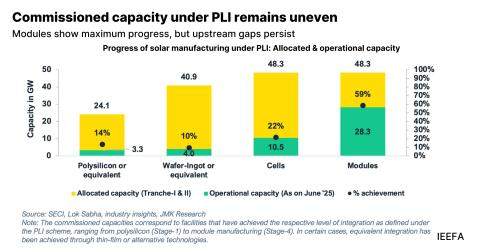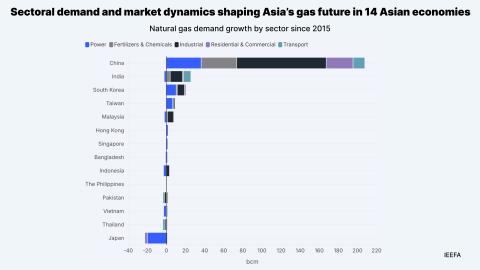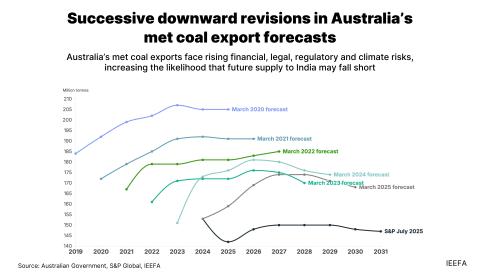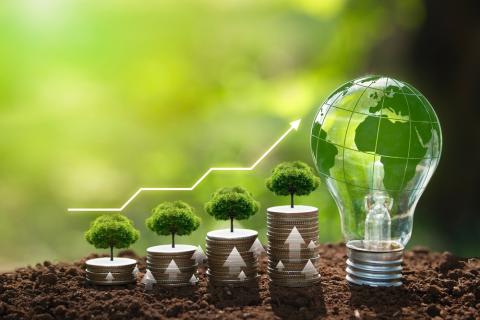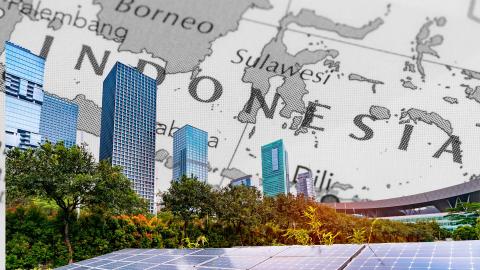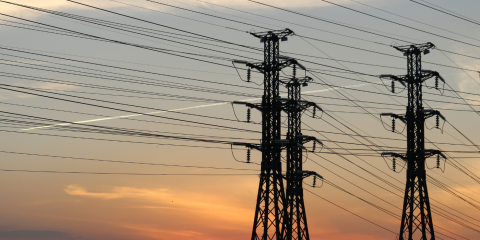A billion dollars going up in the air
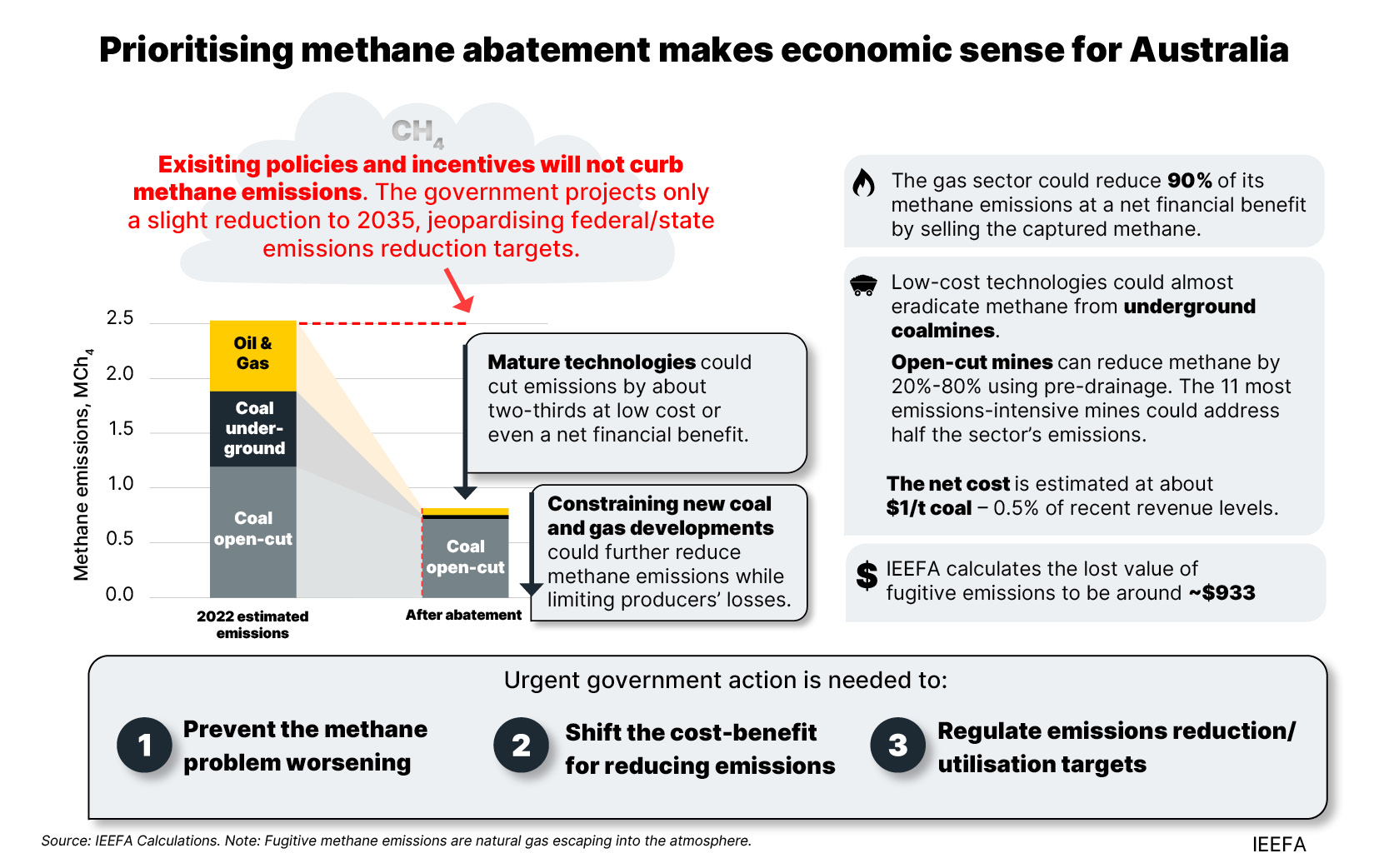
Methane problem needs urgent government action
Key Takeaways:
Methane emissions from coal, oil and gas could increase under current policies – in particular inadequate measurement and settings in the Safeguard Mechanism – and jeopardise emissions reduction targets.
Australia could abate two thirds of its fossil fuel methane emissions using readily available technologies, at a net cost of about $1 per tonne of coal in coalmining, and at a net financial benefit in the gas sector due to the option to sell the methane captured.
About 76 petajoules (PJ) of methane could be recovered each year – more than twice the amount of gas anticipated to be required for power generation in the National Electricity Market in 2025. This represents a lost value of about A$933 million.
Federal and state governments must act urgently to address the problem; Australia lags Europe, the United States and China in implementing effective regulation and price signals.
12 December 2024 (IEEFA Australia): The Australian Government recently announced that it is within striking range of its legislated 43% emissions reduction target by 2030. However, methane emissions from coal, oil and gas could jeopardise achieving this and subsequent targets.
In its latest report Prioritising methane abatement makes economic sense, the Institute for Energy Economics and Financial Analysis (IEEFA) finds that fossil fuel methane emissions represent a very sizeable risk for Australia’s emissions trajectory, as well as a significant economic opportunity.
“The Australian government has committed to reducing its methane emissions by at least 30% between 2020 and 2030. However, the government currently expects methane emissions to stay flat between 2020 and 2035 while carbon dioxide emissions halve,” says Anne-Louise Knight, Australian coal lead analyst and co-author of the report.
“We found that methane emissions could even rise in the coming decade, as underreporting is corrected, as methane-intensive metallurgical coal production increases and as mines get deeper, where methane is typically more concentrated.”
The report points to new data sources, such as satellite monitoring, which suggest methane emissions from open-cut coalmines could be nearly six times as high as reported. Based on a number of sources, IEEFA assumes that actual fugitive emissions are twice as high as reported in the oil and gas sector, and three times as high in open-cut coalmines, in broad alignment with data from the International Energy Agency (IEA).
Based on these factors, the report found that methane emissions could account for 68%-95% of Australia’s indicative targeted emissions by 2035, 78% of NSW’s targeted emissions and even exceed Queensland’s, singlehandedly putting 2035 targets out of reach.
This is despite an attractive economic case to increase methane capture. IEEFA found that 67% of methane emissions from fossil fuels could be abated using readily available technology, at a cost below A$30 per tonne of CO2-equivalent (tCO2e).
“Simply put, fugitive methane is natural gas escaping in the air,” says Joshua Runciman, Australian gas lead analyst and co-author of the report. “We calculated that about 76 petajoules (PJ) of fugitive methane could be recovered annually – more than twice the amount of gas expected to be required for power generation in the National Electricity Market in 2025. This represents a lost value of about A$933 million.
“In the gas sector, about 90% of methane emissions could be abated through best-practice equipment and processes, at a net financial benefit overall since the recovered methane can be sold in domestic and international markets. The United States proposes to require advanced leak detection in gas pipelines to capture those benefits.”
“In the coal sector, nearly 60% of methane could be captured, at a cost of about $1/tonne of saleable coal across the industry. That’s about 0.5% of recent income levels,” says Andrew Gorringe, Australian coal analyst and co-author of the report.
“Australia is falling behind other countries on coal mine methane capture. China is looking at making it mandatory to capture Ventilation Air Methane from underground coalmines and use it to generate electricity. The United States has an advanced program to capture methane from closed mines, which reduces emissions and supports communities facing mine closures.”
Existing policies are ineffective at driving action. Fossil fuel methane emissions appear to have risen under the Safeguard Mechanism, which provides insufficient financial incentives to drive company action. Other barriers to action include the lack of accurate measurement, capability gaps and more profitable uses of capital for companies.
“Governments need to intervene urgently to tackle this growing problem,” says Amandine Denis-Ryan, CEO of IEEFA Australia and co-author of the report. “Experience in other regions shows that a combination of price signals and regulation can be effective at driving comprehensive action to reduce methane.
“We identified a range of tools available to government, from mandating the implementation of best-practice equipment to implementing an effective price signal for example through a methane tax as is being done in the United States. But the most effective way to reduce methane emissions is to reduce fossil fuel production.
“Many proposed Australian LNG projects and some coal projects are unlikely to make financial returns, and could worsen the financial situation of existing projects as global markets head into oversupply and prices decline. It just makes good economic sense to ensure that those projects don’t go ahead.”
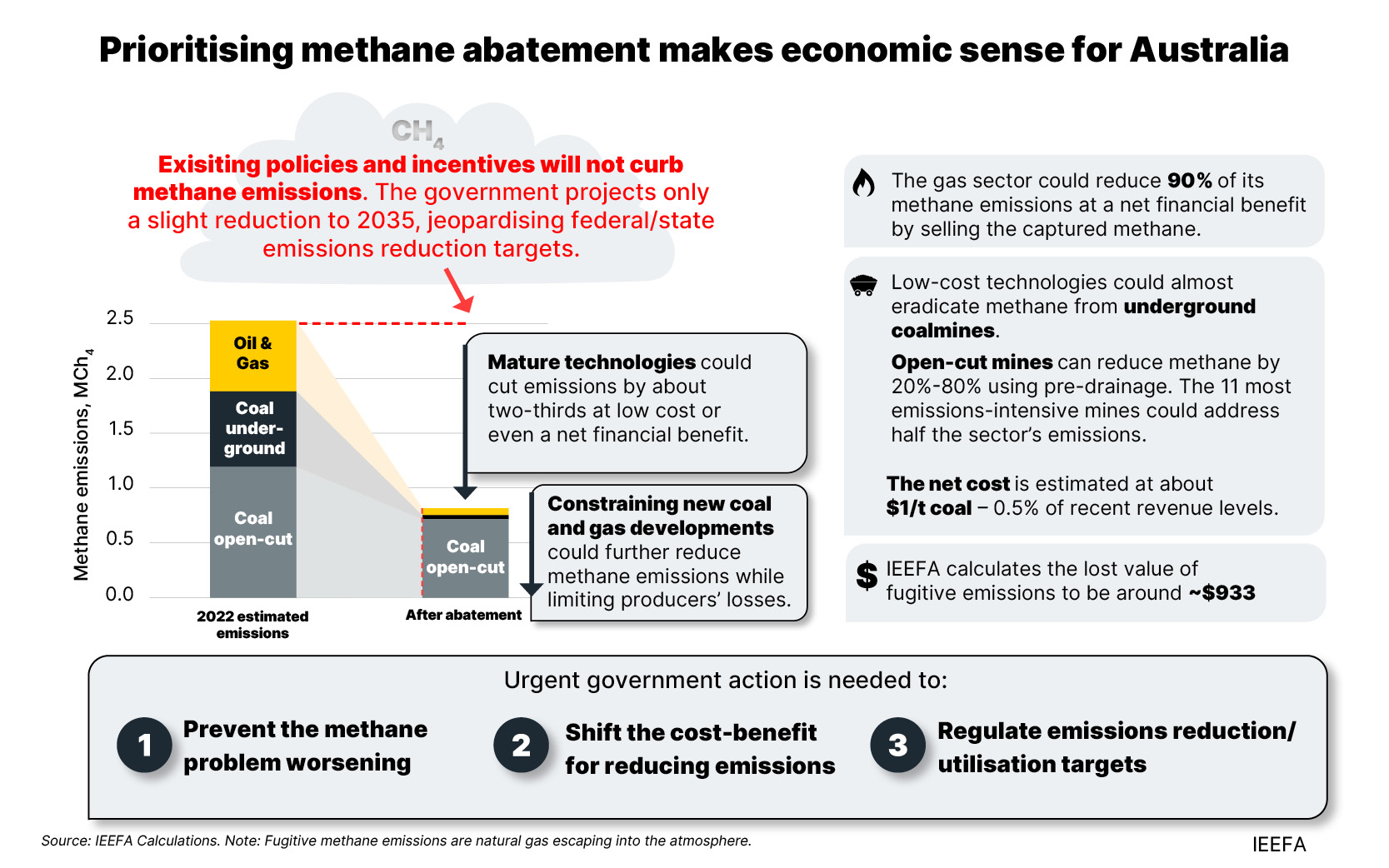
Read the analysis: Prioritising methane abatement makes economic sense
Media contact: Amy Leiper, ph 0414 643 446, [email protected]
Author contacts: Amandine Denis-Ryan, [email protected]
About IEEFA: The Institute for Energy Economics and Financial Analysis (IEEFA) examines issues related to energy markets, trends, and policies. The Institute’s mission is to accelerate the transition to a diverse, sustainable and profitable energy economy. (ieefa.org)






